While carbon dioxide and its supposed detrimental climate change effects have become the media’s favorite boogeyman for seemingly anything that happens these days, new data from NASA’s Vegetation Index – measured by satellites – show remarkable benefits for global plant life.
NASA writes about the index:
“Our lives depend upon plants and trees. They feed us and give us clothes. They absorb carbon dioxide and give off oxygen we need to breathe. Plants even provide many of our medicines and building materials. So when the plants and trees around us change, these changes can affect our health, our environment, and our economy. For these reasons, and more, scientists monitor plant life around the world. Today, scientists use NASA satellites to map the “greenness” of all Earth’s lands. These vegetation index maps show where and how much green leaf vegetation was growing for the time period shown.”
This is what the Earth’s greening looks like today.
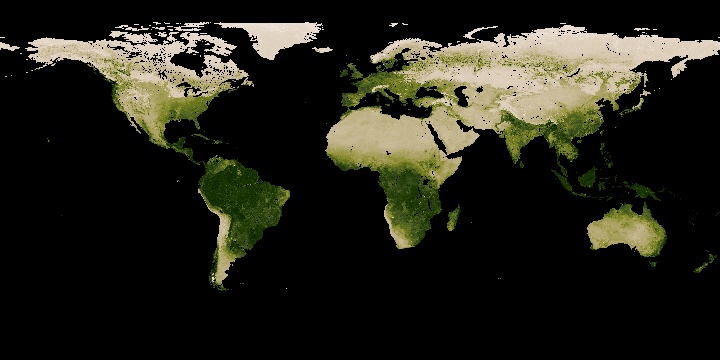
When you download and plot the vegetation index data that are publicly available from NASA, you find a clear upward trend since the year 2000, when the data were first measured:
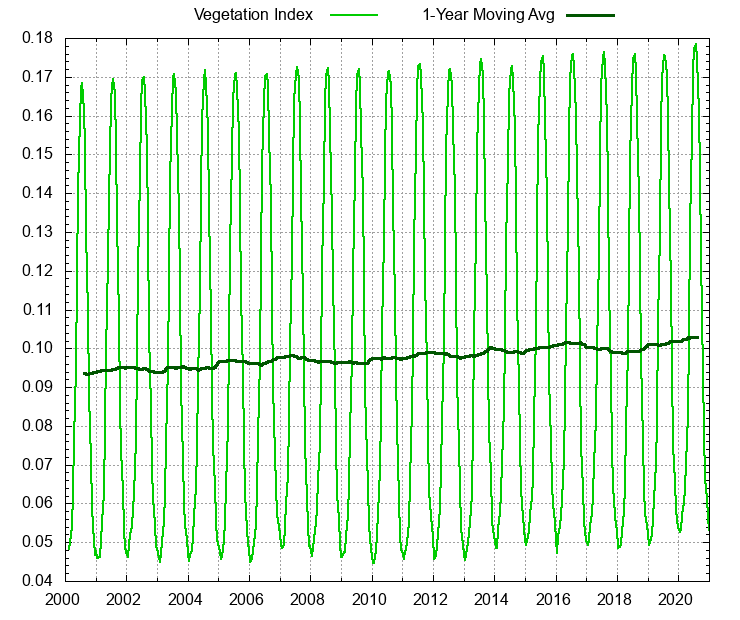
The data in year 2000 is at 0.0936 and in February 2021 it is 0.1029, making a difference of 9.94%. A ~10% gain in just over 20 years is an impressive feat for our planet. This is especially good news because we know this ultimately means greater crop production area, increased crop yields, and expansion of forests and grasslands.
The Sahara Desert is becoming smaller as a result. A 2018 study by Venter et al found the Sahara desert had shrunk in area by 8% over the previous three decades. This is profound because the Sahara covers a vast area of some 9.2 million square kilometers. That translates to more than 700,000 square kilometers more area that’s become green.
There’s more. A 2020 study by Haverd et al found that
“…about 70% of the Earth’s post-1980s vegetative greening trend has been driven by CO2 fertilization.”
The Haverd study also indicates this greening will offset and equivalent of 17 years of man-made carbon dioxide emissions by 2100.
So while climate alarmists are screaming about the latest imagined doom and gloom from “climate change”, the Earth’s vegetation is using that to its advantage. Of course, the media won’t tell you about this good news because it goes against the alarmist narrative.
Update: The original analyst, Zoe Phin, later used a different method of analysis, with the same vegetation index data set, but used a subset measured more often than 16 days, and using linear regression rather than a 1 year running average. She says the greening over 20 years is reduced to just over 5% rather than 10%. While it doesn’t change the fact that the Earth is greening, it does illustrate that different statistical methods can give different answers, something we run across every day in “climate science”.




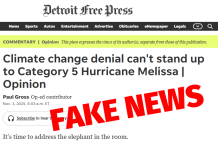
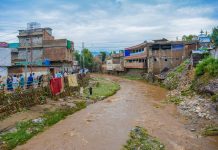






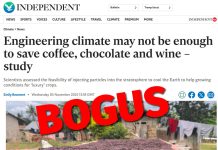
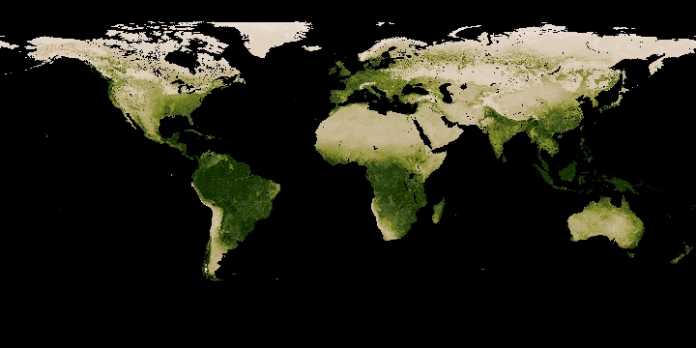









GO GET UM ANTHONY!!!!
How come no link to Zoe’s blog? Where she writes,
“The actual global greening this century, using highest resolution data, is a little over 5%, not nearly 10% as I previously found.”
https://phzoe.com/2021/03/08/accurate-global-greening/
Turns out the 5% is in line with NASA’s estimate,
“Taken all together, the greening of the planet over the last two decades represents an increase in leaf area on plants and trees equivalent to the area covered by all the Amazon rainforests. There are now more than two million square miles of extra green leaf area per year, compared to the early 2000s – a 5% increase.”
https://www.nasa.gov/feature/ames/human-activity-in-china-and-india-dominates-the-greening-of-earth-nasa-study-shows
That said, using just the NDVI, you could replace an acre of Redwood Forest with 1.5 acres of cornfield and claim the earth is getting greener as a result.
The post is updated to note the later analysis using a different method. It doesn’t change the fact that the Earth is greening due to increased CO2 in the atmosphere.
Thanks Anthony,
I wasn’t totally sure if it was an honest mistake or not – so my apologies!
There’s a ton of mistrust from both sides of the climate debate and I’m as guilty as any in that regard.
The greening from CO2 is a big positive. And as weather patterns shift there’s going to be winners and losers, with the bone-dry Sahel projected to get wetter:
https://www.sciencedirect.com/science/article/pii/S2590332220301007
I’m a warmist, but agree that not everything is doom and gloom.